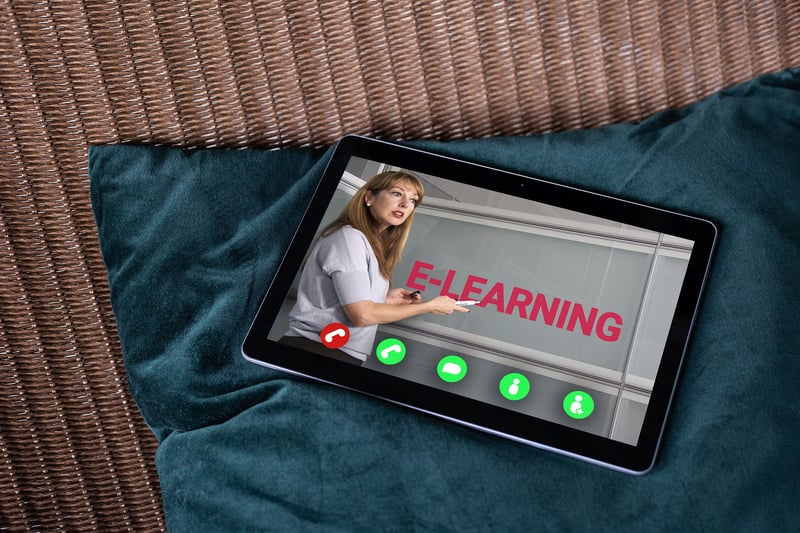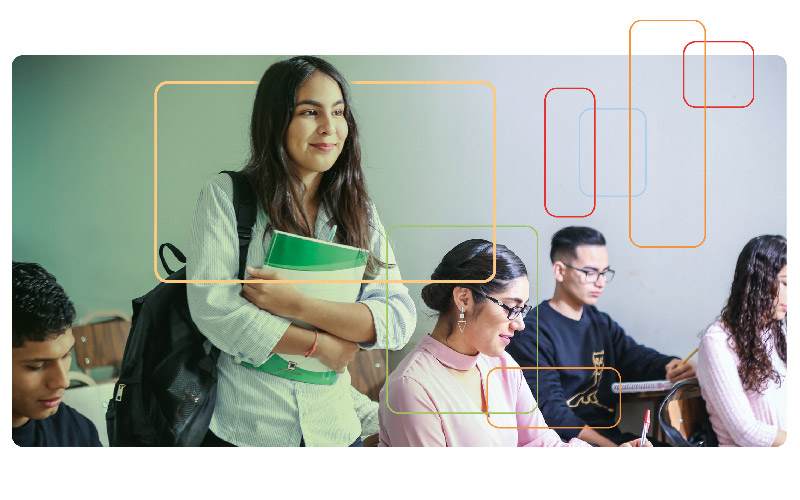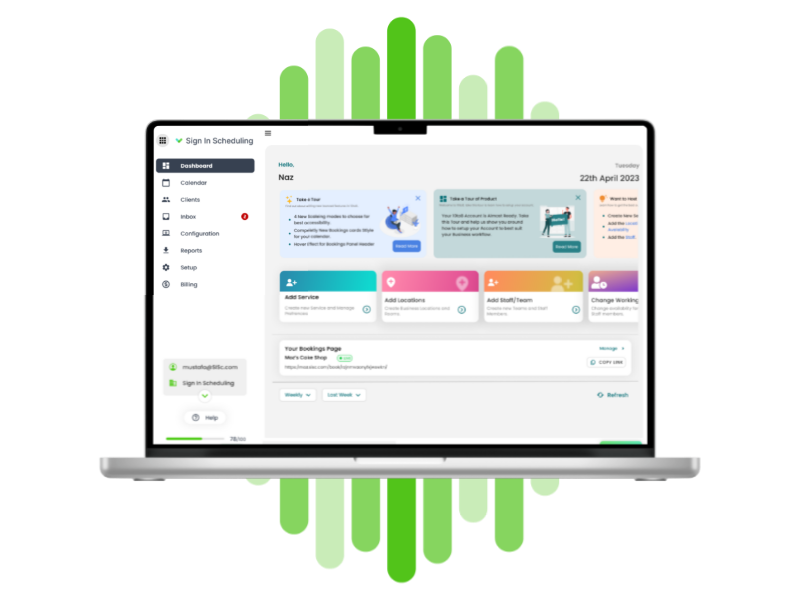So you’ve finally found the perfect prospecting tools for your sales strategy and you are trying to...
How to Make Online Learning More Engaging
Have you ever thought about how much time your students spend in front of a screen? If you were to add up all the time people spend on their laptops and phones and then combine this with the time they spend watching TV or playing video games, that would be a heck of a lot of screen time! But, what if there was a way to get them using those same screens to engage with interactive lessons and virtual learning? Luckily, this can be done, and we have some great tips on how to make online learning more engaging.
These days, virtual classrooms are popping up all over the place in schools and universities. Of course, it’s partly because of COVID-19, but it’s also simply an innovative way to engage students, teachers, and faculty members alike. Many schools are moving towards virtual teaching due to their convenience, cost savings, and wide range of interactive learning features that are now available.
So, we’ve decided to explore what a virtual classroom is in much more detail including, why you should move to one, and what you need for this type of environment. If you want more information on how to create better virtual classroom engagement, read on!
What is a virtual classroom?
A virtual classroom is an online learning environment where students and teachers can interact with each other in real-time. This type of classroom can be used for a variety of purposes, including live lessons, group work, presentations, and more. The best part about virtual classrooms is that they can be accessed from anywhere in the world!
Why should you move to a virtual classroom setup?
There are many reasons why you should move to a virtual classroom. For starters, this type of environment is great for students who need extra help. Teachers can provide one-on-one support which helps students learn at their own pace. Additionally, virtual classrooms are perfect for blended learning environments. Students can access content online and teachers are able to provide feedback in real-time.
In fact, virtual classrooms can have very similar benefits to working from home. For example, students can work in an environment that they are comfortable with, there’s no commute, and it’s better for the environment. Students can learn at their own pace and teachers have more flexibility in terms of lesson planning. Plus, virtual classrooms can help students feel included, which leads them to perform better on assignments and tests.
How to make online learning more engaging?
Now that you know some of the benefits of moving to a virtual classroom, you should know that there are some things that you will need for this type of learning.
For starters, students and teachers both have to have some sort of computer knowledge in order for this type of learning environment to work. In fact, your entire class needs to have access to the Internet. Additionally, students must be able to communicate with their teachers via video; this means having a microphone and decent speakers (or a laptop that has both) as well.

Of course, this isn’t everything that you’ll need for effective virtual classroom engagement and to create a productive online learning environment. Here are a few of the other things that you’ll need if you’re moving towards a virtual classroom setup:
Communication tools
This both covers virtual tools and physical tools that you’ll need for communicating online. For example, you’ll need a microphone and speakers for lessons that take place over the Internet. You will also need online communication software such as Google Hangouts, or Slack for video and audio communication.
Video conferencing tools
Video conferencing tools are essential for lessons that take place over the Internet. For example, platforms like Skype, Zoom, or Google Classroom will allow you to schedule meetings with students and attend classes. Plus, these are not only important during live lessons but also when it comes time to do group projects; students will be able to see each other’s screens and participate in activities together.
Virtual whiteboard
A virtual whiteboard is a great way to brainstorm ideas with your students. This tool allows people to share ideas and drawings, which can be very helpful when working on group projects. Tools such as Jamboard are great options for virtual whiteboards.
File sharing tools
Tools like Google Drive, or DropBox are perfect for sharing files with your students. This is a great way to keep track of any completed tasks that have been turned in and make sure that everyone has the most recent version of a project.
Virtual lesson plans
If you use a virtual classroom, it makes sense to have all of your lessons ready. That way if something comes up and you’re unable to attend class on the day that was planned you can just pull out your lesson plan from Google Drive or Dropbox.
Effective learning management system (LMS)
As mentioned earlier, an LMS is key when it comes to a virtual classroom. This type of system keeps track of all assignments, grades, communication between teachers and students, as well as other important information. There are many different LMSs to choose from, so it is important to find one that meets your specific needs.
High-speed Internet connection
This might be obvious, but you’ll need a high-speed connection in order for your lessons to go smoothly. If the internet isn’t fast enough it will lag and this can make teaching and communicating with your students very difficult.
Virtual quiz and testing tools
To ensure that your students are learning, you may want to take quizzes and tests. There are a lot of different virtual quiz and testing tools out there, but one great option is Kahoot because it allows you to create multiple choice exams and fun multiple-choice quizzes. This can also allow students to relax a bit and have fun with their learning.
What issues are students having to move to online learning?
So, what issues are students facing with moving to online learning and online classes?
Some of the common problems that students face include feeling disconnected from their class, not being able to communicate properly, and struggling with getting lost in a larger group. When you’re communicating across a screen as opposed to in person, it’s important to be very clear and concise in your messages. This means that you might have to type out longer responses than you would if speaking face-to-face, or simply jump on a call to make it clearer what you mean.
Students feeling disconnected from their classmates can happen when classes are too large or when everyone is working on different parts of the same project. To keep students connected and engaged, try to break up into smaller virtual groups whenever possible or find ways for everyone to interact with each other at the same time.
This is why it is important to use tools like Google Hangouts and Slack when teaching online as they allow for communication from students to the teacher and vice versa.
A few more issues that students face include having to work on their own, struggling with time management, and feeling overwhelmed. It is important for teachers to be there for their students and help them through these struggles and work hard to keep students engaged.
How can I increase the engagement of my students in the online environment?
When it comes to how to make online learning more engaging, there are a few different things that teachers can do in order to increase the engagement of their students in an online environment.
One way is to use creative methods for delivering content. This could be through things like quizzes and games to introduce a more interactive learning experience, or by using multimedia such as videos and images. It’s also important to keep lessons short and sweet, as students will be more engaged if their attention span isn’t being tested.

Next, teachers can use student-led learning experiences as a way to increase engagement. One great way to encourage this is by having students work on group projects together, which can lead to collaboration and creativity. Groups allow for active engagement because each person not only gets their own opportunity to learn something new but also helps others around them as well. This is a great way to encourage students to take ownership of their own learning.
Another way to increase active engagement is by using tools that allow for student-to-teacher and teacher-to-student communication. This could be in the form of discussion forums, chat rooms, or platforms like Slack. When teachers and students are able to communicate with one another more, students are more likely to be engaged in the learning process.
What forms of engagement should you use in your classroom?
There are a variety of different techniques that teachers can use to boost virtual classroom engagement.
One type is called “direct instruction.” This involves the teacher presenting information to the students and then guiding them through activities that will help them learn the material.
Another form is “inquiry-based learning.” This approach allows students to explore topics that interest them and come up with their own ideas about what they are learning.
A third form is “constructivism.” This approach focuses on students building their own understanding of the material by working through problems and activities. And lastly, there’s “student-centered instruction.” This involves letting students take control over their own learning by choosing what they want to learn and when they want to do it.
What is one downside to online classes?
There are a few different downsides to online classes, one of which is that students can sometimes feel isolated from their classmates and the instructor. When students are in a traditional classroom setting, they are able to interact with their peers and the teacher more easily. This interaction can help students stay engaged in the learning process.
Another downside to online classes is that it can be more difficult for students to stay on task. When there are no physical cues in the classroom, such as a teacher walking around or classmates working together, it can be easy for students to get distracted and lose focus.
Overall…
Moving to a virtual classroom can be intimidating, but it is well worth the effort. If you’re wondering how to make online learning more engaging, then there are so many potential options. Going virtual is a great way for teachers and students to stay connected outside of the traditional setting as well as provide an opportunity for those who might not otherwise have access.
Virtual classrooms can be particularly helpful when working with at-risk populations such as foster children or homeless youth, communities where technology is becoming increasingly more prevalent and accessible. This also makes it easier than ever for students to get the help they need when they fall behind in their school work.
With the right tools in place, both students and teachers can reap the benefits of this type of learning environment.






Blog comments